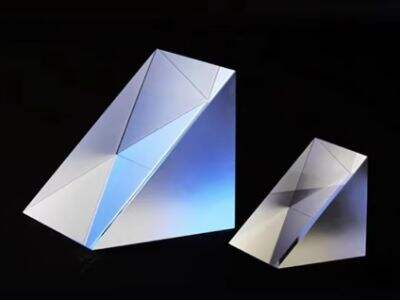光学平行板は特別な道具です。科学者が光と作業するために重要です。これらの板は基本的に透明なガラスの平らなシートであり、光に対して魔法のようなことができます。光を反射させたり、屈折させたり、さらにはその成分に分離することもできます。市場にはさまざまな種類の光学平行板もあり、これらは多くの科学実験において結果指向です。この記事では、光学平行板の異なる種類と科学界でのその応用について理解するのに役立つでしょう。
いくつかの光学平行板について説明
研究者たちは多くの興味深い実験で光学的な平行板も使用しています。各プレートには独自の特性があるため、特定の実験に適したプレートを選ぶことが重要です。科学者にとって優れた選択肢の一つが光学的な平行板です。
サファイア平行板
ここでのサファイアとは、非常に強靭な素材を指しており、それがサファイア平行板の名前でもあります。この素材は非常に強く、また傷つきにくい特徴があります。これらのプレートは極めて高い温度に耐えることができ、加熱されても劣化しません。[10] サファイアはまた非常に透明度が高く、多くの光が必要な実験において科学者たちを助けています。その耐久性と透明性により、サファイア平行板は過酷な条件での実験に頻繁に用いられる素材となっています。
融融石英平行板
融 silica コーティングの平行板、特殊な種類のガラスのコーティング付き平行板。これらの板は光を多く透過させ、吸収せず、多くの科学的試験において重要です。温度変化に対して安定した実験に適しており、これが正確な結果を必要とする科学者にとって信頼性と信頼性を提供します。
石英平行板
これらの平行板は、透明さで有名な純粋な石英結晶で作られています。これらの板は非常に透明で、UV光を透過できるため、特定の実験に使用できます。非常に安定しており、高温に耐えられるため、条件が明確に定義された実験に理想的です。石英平行板は特に偏光光実験に有用で、光の物理的特性を強調することができます。
高品質光学平行板
光学窓
光学ウィンドウは、両面が平らで滑らかに研磨された一種の光学平行板です。これらの板は光学システムの出入り口で使用され、実験において光が入出力するのを助けます。2つの滑らかな面は、光を狭い空間で操作する際の実験にも役立ちます。光学ウィンドウは、科学者が光を操作するためによく使用されるツールです。
ビームスプリッター
もう一つの光学平行板の例がビームスプリッターで、科学者が光を2つの部分に分離するために使用します。このような板は一部の光を透過し、残りを反射することができます。この特性により、ビームスプリッターは多くの光学実験(顕微鏡を用いた実験も含み、科学者が非常に小さなものを詳細に撮像する場合)で非常に有用です。彼らが観察しているもののさらなる情報を得るために、光を分割することができます。
プリズム
プリズムは、光を魅惑的な方法で屈折させる特殊な板です。通常、三角形をしており、白い光を虹のように色のスペクトルに分けることができます。この光を分離する特性が、プリズムを科学における優れた道具にしています。また、プリズムは光線の方向を調整し、正しい方向に進ませることもできます。プリズムは、光の特性を探るための科学者にとって貴重な道具です。
光学平行板の種類
ブルースター窓
ブルースター窓とは、特定の角度で配置された特殊な一対の平行板です。この窓は光を一つの方向に偏光します。これにより、偏光光が必要とされる実験(例えば、材料が光にどのように反応するかを調べる偏光計測など)において、ブルースター窓は非常に便利です。これらの板は、科学者が実験で重要なデータを得るためによく使用されます。
波長板
光の挙動を変えることができる別の形態の光学的な平行板として、ウェーブプレートがあります。これらはまた、偏光を遅らせるか遅延させるため「遅れ板」とも呼ばれています。ウェーブプレートは、光通信を含む多くの科学技術分野で応用されており、光を通じて情報を伝送するために使用できます。実験において、光が科学者の要求通りに振る舞うことを保証するために重要な役割を果たします。
偏光器
偏光器は、一部の偏光された光をフィルタリングできるコーティングされた中間平行板です。これにより、特定の種類の光(例:線形偏光)が必要とされる実験に特に適しています。偏光器は、写真弾性や蛍光顕微鏡など、さまざまな材料とその光との相互作用を研究するために、多くの分野の科学者によって使用されています。
平行板から実験支援へ:利用可能なタイプ
反射防止膜付き平行板
これらは反射防止コーティングが施された平行板です。この方法は、実験における光の損失を減らし、効率を向上させるため有用です。これらの板を使用すると、科学者はより多くの光を効果的に利用でき、より良い結果を得られます。
温度制御付き平行板
接触力、ガス、または液体流体に適用されます。この機能は、非常に特定の温度設定を必要とする実験において特に重要です。例えば、生体力学測定や熱画像撮影を行う際、科学者は実験が正しく機能するように、正確な温度の一貫性を確保する必要があります。これらの板により、精密な結果を得るための特定の条件を作り出すことができます。
ウェッジ型平行板
ウェッジ付き平行板は、わずかに角度が付けられているため、長さ全体で平行を維持しないという点でユニークです。これらの板は、光束の再アラインメントを支援し、歪みを軽減するために光学機器に定期的に取り付けられます。ウェッジ付き平行板を使用して、科学者たちは光を正しい経路に導き、実験がスムーズに行われることを確保できます。

